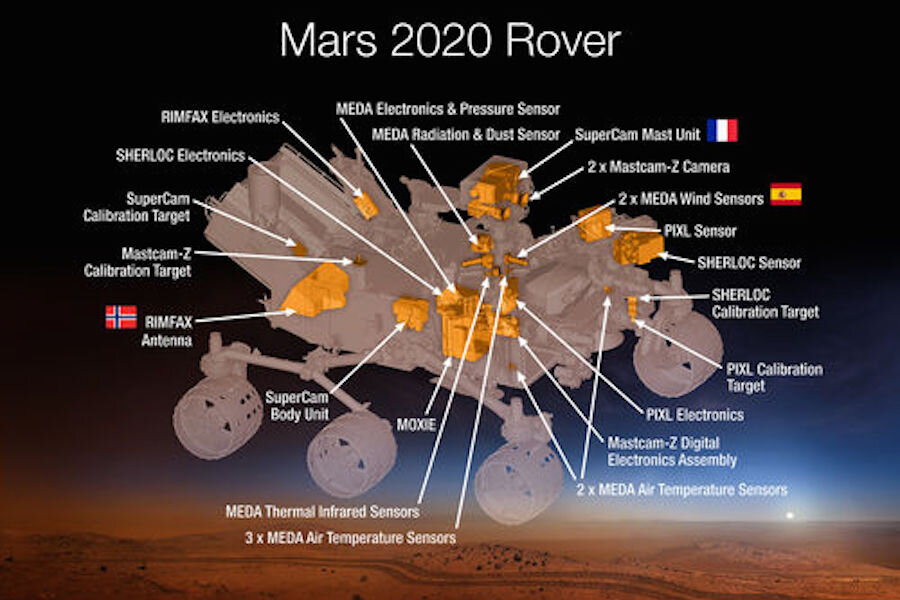Mars 2020: How NASA will search for life on a shoestring budget
Loading...
The next NASA Mars rover boasts an important mission – finding traces of previous life – but it has a budget about $1 billion less than its predecessor, Curiosity.
Despite the limited cash flow, NASA intends to improve various aspects of the new rover, including its robotic arms and landing mechanisms. Sierra Nevada Corporation’s (SNC) Space Systems announced Monday it had been awarded a contract to build these new parts for the budget rover, marking the 13th time SNC has supplied equipment and parts for a mission that will reach the red planet.
“Sierra Nevada has been a terrific partner on our planetary robotic missions for a long time now,” said Matt Wallace, Mars 2020 deputy project manager, in a phone interview with The Christian Science Monitor. “They were the obvious first choice.”
For the 2020 Mars rover, SNC will build a descent brake mechanism, responsible for the final portion of the landing, and will also design and manufacture new actuators for the robotic arm and the sample caching system.
The new parts should help the 2020 rover tackle one of the most fundamental questions about the red planet: Did anything ever live there?
The 2020 rover will search for evidence of ancient life by collecting data and samples from regions that scientists believe once held the right conditions for it.
The new rover will include the most sensitive tools ever sent to Mars, allowing humans to bring “the full power of terrestrial instrumentation to bear,” Mr. Wallace said.
The sample caching system and robotic arm will allow the rover to stockpile interesting finding that a future mission could retrieve.
The descent brake mechanism (DBM) will also play a crucial role, as it controls the final stage of the rover's landing process. The device will gently lower the tethered rover (the size of a small car) onto the surface. The overall landing process will mirror the landing process of the Curiosity rover in 2012. SNC also designed the DBM for that rover as well.
The overlap is part of how NASA is sending another rover to Mars on a tight budget. As the Monitor’s Liz Fuller-Wright explained in 2013:
The scientific instruments will be different, but the chassis and the entire landing system – including the nifty sky crane – can be rebuilt with little new engineering or research.
Like a new model year of the same car, NASA has upgraded the dashboard and added heated seats, but the engine, drive shaft, and wheels are essentially the same. Also, as Curiosity has been such a roaring success, NASA's version of car insurance (funding to be held in reserve in case of emergency) is cheaper, too.
But there will be plenty different as well: the mission, the potential answers and information, and, of course, the testing to prepare for an eventual crewed mission.
“We are carrying a number of technologies we want to demonstrate or try out or collect data from to support possible human exploration of Mars,” NASAsMr. Wallace told the Monitor.
Some of those instruments include model devices that create pure oxygen by absorbing CO2, technology for a weather station, a device to characterize the dust, and a new landing system to avoid hazards.
“We have a couple other payloads as well that are really geared toward starting the human precursor technology that the agency needs,” Wallace added.








